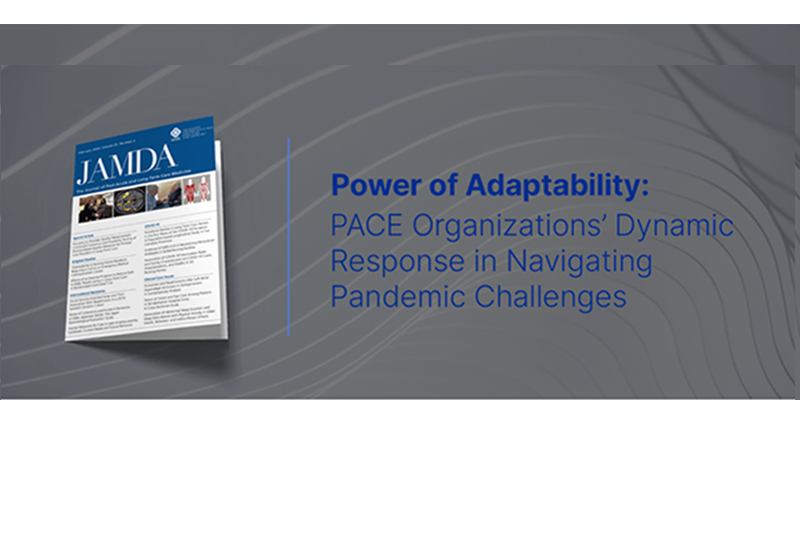
Power of Adaptability: PACE Organizations’ Dynamic Response in Navigating Pandemic Challenges
When the COVID-19 pandemic occurred, healthcare organizations had to quickly adapt how they delivered care, including Programs of All-Inclusive Care for the Elderly (PACE) which value keeping frail older adults healthy in their homes and communities. For instance, among Intus Care’s PACE partners, 74% of participants live at home alone or with family. So, when the pandemic occurred, the stakes were high for PACE organizations to meet participants’ needs, while staying safe and healthy in place. A recent study published in the Journal of the American Medical Directors Association (JAMDA) found PACE organizations rose to the occasion, leveraging their unique program flexibilities to ensure the well-being of their participants.
Through a mixed-methods approach involving national surveys and qualitative interviews, researchers explored the responses of PACE organizations to the pandemic, uncovering key insights into their innovative strategies and the implications for long-term care. The findings reveal a transformation of the PACE model from primarily center-based to a home-based approach. In response to the challenges posed by COVID-19, PACE organizations significantly increased the provision of in-home services, leveraging telehealth, remote monitoring, and other enhanced support to beneficiaries. This shift not only ensured continuity of care, but also aligned with participant preferences, empowering older adults to remain in their chosen residential settings. PACE organizations also took steps to mitigate social isolation and boredom, which is always a component of the PACE model but was even more important while participants had to stay home more than ever before because of the pandemic.
Intus Care looked at depression rates for PACE participants compared to similar populations earlier this year. According to the Centers for Medicare and Medicaid Services (CMS), dual eligible beneficiaries have a depression rate of 31%. With data pulled from Intus Care PACE partners this July, we found a participant depression rate of 26%. Overall, PACE participants are less likely to suffer depression, according to the National PACE Association. A study found 27% of new PACE enrollees scored as depressed on an assessment administered before enrollment. Nine months later, 80 percent of those individuals no longer scored as depressed.
Back to the study, central to the success of PACE organizations in navigating the pandemic was their commitment to person-centered, team-based care. The interdisciplinary teams comprising various health care disciplines played a pivotal role in planning, delivering, and coordinating individualized care for participants. Moreover, the fully integrated service model and flexible capitated payment structure inherent to PACE facilitated swift adaptations and mitigated the impact of the crisis.
Importantly, the study highlights the broader implications of PACE organizations’ response for the long-term care landscape. By prioritizing participant well-being and embracing innovative approaches, PACE programs not only weathered the storm but also paved the way for future initiatives to better serve older adults with complex care needs. The lessons learned from this experience can inform strategies to expand and enhance programs like PACE, ensuring the delivery of high-quality, person-centered care in the face of evolving challenges.
As we reflect on the resilience and adaptability demonstrated by PACE organizations during the COVID-19 pandemic, it becomes evident that their response not only exemplifies best practices in long-term care but also underscores the importance of flexibility and innovation in meeting the needs of vulnerable populations. Looking ahead, the lessons learned from this crisis will undoubtedly shape the future of care delivery, guiding efforts to build more robust and responsive systems that prioritize the well-being and dignity of older adults across the continuum of care.
Intus Care congratulates PACE organizations across the country for their adaptability during the pandemic. We also recognize the pivotal role played by the programs’ flexibility in delivering care, which enabled them to not only thrive during challenging times but also ensures continued success into the future. Together with PACE partners, we remain committed to driving positive change and fostering a brighter future for our senior community.
Want to learn more about how Intus Care can support your PACE organization using data analytics and expert consultation? Reach out today!

